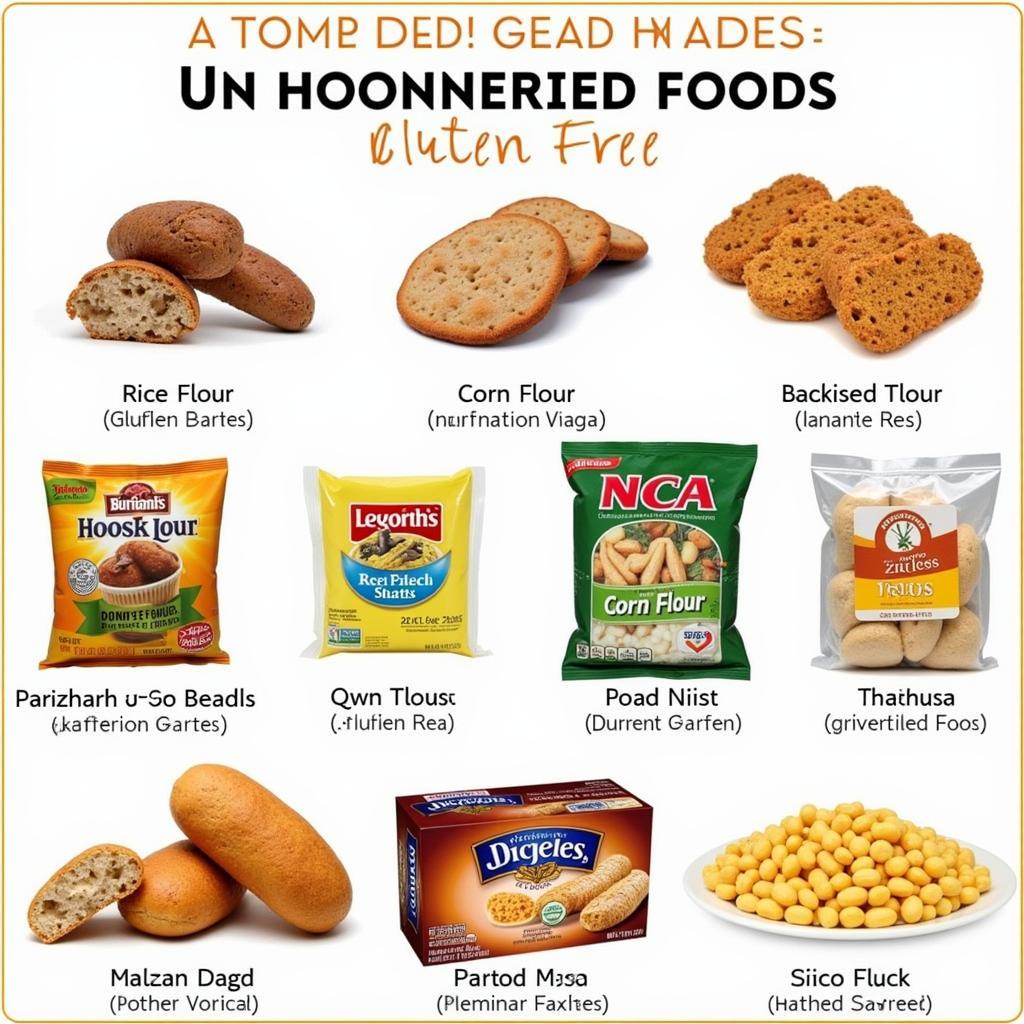Unleavened foods, those prepared without any raising agents like yeast or baking powder, hold a unique place in culinary traditions across the globe. From crispy flatbreads to delicate crackers, these foods offer a delightful variety of textures and flavors. This guide delves into the world of unleavened foods, exploring their history, cultural significance, and providing a comprehensive list of examples. We’ll also answer common questions and provide resources for those interested in incorporating these versatile foods into their diets.
Exploring the World of Unleavened Breads
Unleavened breads are perhaps the most well-known category of unleavened foods. Their history is deeply intertwined with ancient civilizations and religious practices. For instance, matzah, a crucial part of Jewish Passover, symbolizes the Israelites’ hasty exodus from Egypt, where they had no time for their bread to rise.
- Matzah: This thin, crisp bread is a staple during Passover.
- Tortillas: A cornerstone of Mexican cuisine, tortillas are used in countless dishes.
- Roti: This round flatbread is popular in India, the Caribbean, and other regions.
- Naan: While some variations use yeast, traditional naan is unleavened and cooked in a tandoor oven.
- Chapati: A common everyday bread in India, Pakistan, and Bangladesh.
Beyond Bread: Other Unleavened Foods
The world of unleavened foods extends far beyond bread. Many snacks, desserts, and even main dishes utilize this preparation method. These foods offer a fascinating glimpse into diverse culinary traditions and dietary preferences.
- Crackers: From simple saltines to gourmet seeded varieties, crackers are a popular snack.
- Crisps: Thinly sliced and fried or baked potatoes, often seasoned.
- Flatbreads used as pizza bases: Thin and crispy crusts made without yeast.
- Some types of pasta: While many pastas use eggs, some traditional varieties are made simply with flour and water.
Why Choose Unleavened Foods?
Choosing unleavened foods can be motivated by various reasons, from religious observance to dietary restrictions and even personal preference. Understanding these reasons can help us appreciate the versatile nature of these foods.
- Religious Observances: As seen with matzah during Passover.
- Dietary Restrictions: Some individuals with gluten sensitivities might find some unleavened foods easier to digest.
- Ease of Preparation: Many unleavened foods are quick and easy to make.
- Unique Flavor and Texture: The absence of yeast creates a distinct flavor profile.
“Unleavened foods offer a valuable window into culinary history,” says renowned food historian Dr. Amelia Peterson. “They represent resourcefulness and adaptability in food preparation.”
Unleavened Foods and Gluten
While some unleavened foods are naturally gluten-free, it’s important to remember that not all are. Many unleavened breads and crackers are made with wheat flour. Always check ingredient lists carefully if you are following a gluten-free diet. However, unleavened foods made with alternative flours, such as rice flour or corn flour, can be excellent gluten-free options.
 Gluten-Free Unleavened Food Choices
Gluten-Free Unleavened Food Choices
A List of Unleavened Foods: A Quick Recap
In conclusion, the world of unleavened foods is vast and varied, offering a delicious exploration of culinary traditions and dietary possibilities. From staple breads to crispy snacks, these foods deserve a place in every food lover’s repertoire. So, whether you’re observing a religious tradition, following a specific diet, or simply seeking new culinary adventures, explore the diverse List Of Unleavened Foods and discover the unique flavors they offer.
FAQ
- What does unleavened mean? Unleavened means without leavening agents, such as yeast or baking powder.
- Are all unleavened foods healthy? Like any food group, the nutritional value varies. Focus on whole-grain options when possible.
- Can I make unleavened bread at home? Absolutely! Many recipes are readily available online.
- What are some popular unleavened snacks? Crackers, crisps, and papadums are popular choices.
- Are tortillas unleavened? Traditional corn tortillas are unleavened. Some flour tortillas may contain leavening agents.
- Where can I find more information about unleavened foods? Numerous online resources and cookbooks offer in-depth information and recipes.
- Are there any cultural significance to unleavened foods? Yes, many cultures have traditions and rituals involving unleavened foods, such as matzah in Jewish culture.
Common Scenarios and Questions:
- Scenario: Hosting a Passover Seder. Question: Where can I buy matzah?
- Scenario: Following a gluten-free diet. Question: Are there gluten-free unleavened bread options?
- Scenario: Trying to incorporate more whole grains into your diet. Question: What are some healthy unleavened whole-grain bread options?
Further Reading:
Check out our other articles on related topics such as “Gluten-Free Baking” and “Exploring World Cuisines.”
Need Help?
For further assistance, please contact us: Phone: 02437655121, Email: minacones@gmail.com or visit us at: 3PGH+8R9, ĐT70A, thôn Trung, Bắc Từ Liêm, Hà Nội, Việt Nam. We have a 24/7 customer service team.